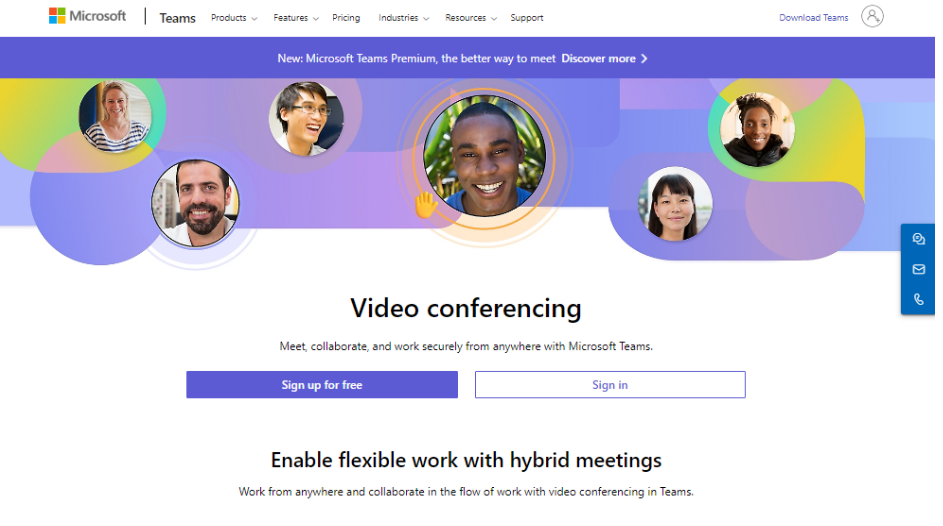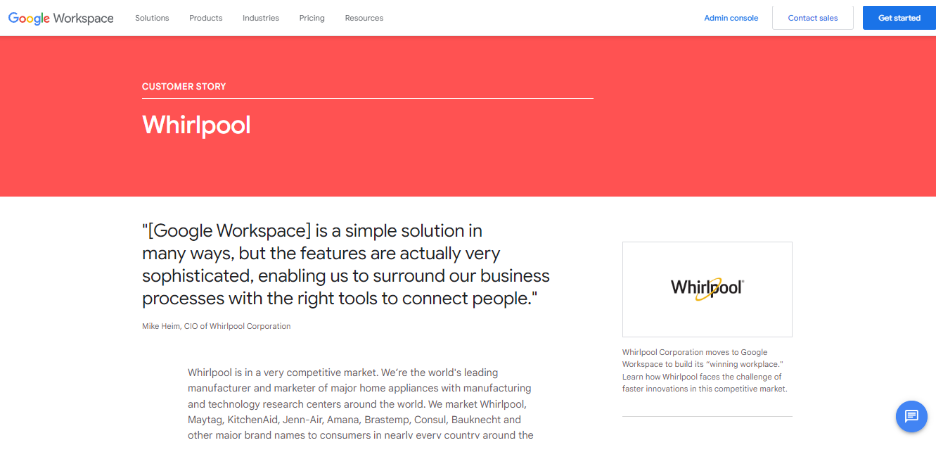As traditional office spaces make way for a more flexible and dynamic work environment, virtual collaboration platforms have risen to prominence as architects of this modern professional revolution. The shift toward remote and globalized teamwork has propelled these platforms into the spotlight, offering a suite of tools designed to seamlessly connect individuals regardless of physical distance.
In this article, we will explore how these dynamic tools have revolutionized the way teams collaborate and interact. From enhanced communication channels to seamless project management, we will explore the multifaceted impact of these platforms on team dynamics, productivity, and the evolving nature of work itself.
Key Features of Virtual Collaboration Platforms
Virtual collaboration platforms are tools that enable individuals and teams to work together, communicate, and share information seamlessly, even if they are located in different geographical locations. These platforms have become increasingly essential in today’s global and remote work environments. According to GitLab’s findings, 62% of respondents expressed their willingness to switch from a co-located company to an organization that embraces a remote work culture.

Here are key features commonly found in virtual collaboration platforms:
Real-time Communication Tools
Video conferencing, instant messaging, and audio calls enable team members to connect seamlessly, breaking down geographical barriers. These tools foster a sense of immediacy and responsiveness, mimicking face-to-face interactions even in virtual environments. This not only enhances the speed of communication but also promotes a collaborative atmosphere where ideas can be shared, problems solved, and decisions made in real time.
Document Sharing and Collaborative Editing
Teams can collectively work on files, presentations, and spreadsheets in real time, regardless of their physical locations. This promotes a more efficient and dynamic workflow, as multiple team members can contribute simultaneously, reducing the need for cumbersome email exchanges and version control challenges. This feature not only enhances productivity but also ensures that all team members have access to the latest and most up-to-date information.
Project Management and Task Tracking
Virtual collaboration platforms often come equipped with integrated project management and task-tracking tools. These features allow teams to organize, assign, and monitor tasks effectively. Project timelines, milestones, and deadlines can be set and tracked in a centralized system, providing a comprehensive view of the project’s progress. This fosters accountability among team members, promotes transparency, and ensures everyone is aligned with the project’s goals.
Integration with Other Productivity Tools
The integration capabilities of virtual collaboration platforms are crucial for ensuring a seamless and interconnected work environment. These platforms often integrate with a variety of productivity tools such as calendars, email clients, and file storage systems. This integration minimizes the need for constant switching between applications, allowing team members to access everything they need from a centralized platform.
Accessibility and Flexibility
Accessibility and flexibility are key components of virtual collaboration platforms, enabling teams to work from diverse locations and time zones. Cloud-based solutions, coupled with mobile applications, ensure that team members can access collaboration tools from any device with an internet connection. This flexibility not only accommodates remote work arrangements but also allows for increased collaboration among globally dispersed teams.
Transformation of Team Dynamics
The transformation of team dynamics, especially in the context of breaking down geographical barriers, enhancing communication, and improving team efficiency, is significantly impacted by various factors. Here’s an elaboration on each aspect:
Global Collaboration
- Increased Access to Talent: Geographical boundaries no longer limit access to talent. Teams can collaborate globally, tapping into diverse skill sets and perspectives.
- 24/7 Work Cycles: With teams spanning different time zones, work can continue around the clock, enabling continuous progress and reducing project timelines.
Remote Work Trends
- Flexibility and Work-Life Balance: Remote work trends contribute to a more flexible work environment, allowing team members to balance work and personal life more effectively.
- Cost Savings: Reduced dependence on physical office spaces can lead to cost savings for organizations in terms of office maintenance and utilities.
Video Conferencing
- Face-to-Face Interaction: Video conferencing fosters a sense of connection by enabling face-to-face meetings, which can be crucial for building relationships and understanding non-verbal cues.
- Real-time Collaboration: Teams can share screens, documents, and visual aids during video meetings, enhancing collaboration and understanding.
Instant Messaging and Chat:
- Quick Communication: Instant messaging allows for swift and direct communication, reducing delays in receiving and responding to messages.
- Group Collaboration: Group chat functionalities facilitate team-wide communication, ensuring everyone stays informed and engaged.
Streamlined Workflows:
- Centralized Information: Virtual collaboration platforms enable the centralization of information, making it easily accessible to all team members.
- Project Management Tools: Integrated project management tools help streamline workflows, allowing for efficient task allocation, tracking, and completion.
Faster Decision-Making Processes
- Real-Time Collaboration: Virtual collaboration tools facilitate real-time collaboration on documents and projects, speeding up decision-making processes.
- Quick Access to Information: Team members can quickly access relevant information and data, enabling them to make informed decisions without delays.
Successful Implementation of Virtual Collaboration Platforms
Here are some examples of successful implementation of virtual collaboration platforms:
Microsoft Teams
Microsoft Teams seamlessly integrates with the Microsoft 365 suite and offers features like video conferencing, document collaboration, and chat. Its success lies in providing a comprehensive collaboration platform that integrates with other widely used productivity tools, making it a valuable solution for businesses and remote teams.


Asana at Uber
Uber, the ride-sharing company, uses Asana as a project management and collaboration platform. Asana helps Uber teams organize tasks, set priorities, and track project timelines, enhancing overall efficiency and coordination among teams operating in various locations.


Google Workspace at Whirlpool Corporation:
Whirlpool Corporation, a leading home appliance manufacturer, implemented Google Workspace for communication and collaboration. Google Workspace provides tools like Gmail, Google Drive, and Google Meet, enabling Whirlpool employees to work together seamlessly, irrespective of their physical location.


Microsoft Teams at Accenture
Accenture, a global consulting and professional services firm, successfully implemented Microsoft Teams for virtual collaboration. Teams helped Accenture employees communicate, collaborate, and share documents in real time, fostering a more connected and efficient work environment.


Slack at Shopify
Shopify, an e-commerce platform, implemented Slack as its primary communication and collaboration tool. Slack enables real-time messaging, file sharing, and integration with various third-party applications, streamlining communication and project collaboration among Shopify’s distributed teams.


Challenges and Solutions
The rise of virtual collaboration platforms has indeed transformed the way teams work together, ushering in a new era of flexibility and connectivity. However, this transformative journey is not without its challenges.
Data Encryption
Data encryption is crucial for ensuring the security and privacy of sensitive information in virtual collaboration platforms. However, challenges may arise in implementing robust encryption measures. One challenge is the potential performance impact on data transmission and processing. To address this, organizations can invest in advanced encryption algorithms and hardware acceleration. Regularly updating encryption protocols and conducting security audits are essential for staying ahead of emerging threats and maintaining a secure virtual collaboration environment.
User Authentication
User authentication is a key element in securing access to virtual collaboration platforms. Challenges include the risk of unauthorized access and the vulnerabilities associated with password-based authentication. Implementing multi-factor authentication (MFA) solutions can significantly enhance security by requiring users to provide multiple forms of identification. This adds an extra layer of protection, reducing the likelihood of unauthorized access even if login credentials are compromised.
Training and Onboarding Programs
Effective training and onboarding programs are crucial for ensuring that users can fully leverage the features of virtual collaboration platforms. One common challenge is resistance to change or a need for familiarity with the technology. To overcome this, organizations should invest in comprehensive training programs that include hands-on experiences, tutorials, and ongoing support. Encouraging a culture of continuous learning and providing user-friendly resources can help address the learning curve associated with adopting new collaboration tools.
Addressing Common Misconceptions
Misconceptions about virtual collaboration tools, such as concerns about productivity, security, and the impersonal nature of remote work, can hinder successful adoption. Organizations can address these misconceptions through clear communication, showcasing success stories, and providing transparent information about security measures. Highlighting the positive impact on work-life balance, collaboration efficiency, and flexibility can help dispel common myths and encourage a more positive perception of virtual collaboration.
Future Trends in Virtual Collaboration
Integration of Artificial Intelligence
The integration of artificial intelligence (AI) is poised to revolutionize virtual collaboration platforms. AI can enhance automation, providing intelligent insights, and streamlining repetitive tasks. Natural language processing (NLP) capabilities can improve communication by enabling more advanced chatbots and voice-activated commands. AI-driven analytics can also offer valuable insights into team dynamics, project progress, and user behavior, contributing to more data-driven decision-making processes.
Virtual Reality in collaboration
The future of virtual collaboration may witness a significant shift towards incorporating virtual reality (VR) technologies. Virtual reality can provide immersive meeting experiences, allowing team members to interact in a three-dimensional space, fostering a sense of presence and engagement. VR can also facilitate virtual training sessions, collaborative design work, and simulations, making it a powerful tool for enhancing creativity and collaboration. It can also benefit collaborative work with a logo maker, illustrations, graphic design, photoshop, and other tools. As VR technology becomes more accessible and sophisticated, its integration into virtual collaboration platforms will likely redefine how teams collaborate and communicate in the digital space.
Conclusion
Looking ahead, the integration of artificial intelligence and the potential incorporation of virtual reality holds promising prospects for further revolutionizing how teams collaborate in the digital era. As these platforms continue to evolve, the future promises even more innovative solutions, empowering teams to collaborate seamlessly, irrespective of physical boundaries, and ushering in a new era of productivity and efficiency in the world of work.
Need help with your online presence and strategy?
Contact us today!

